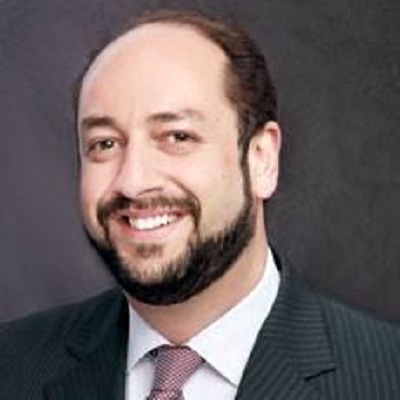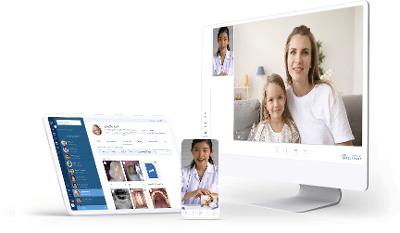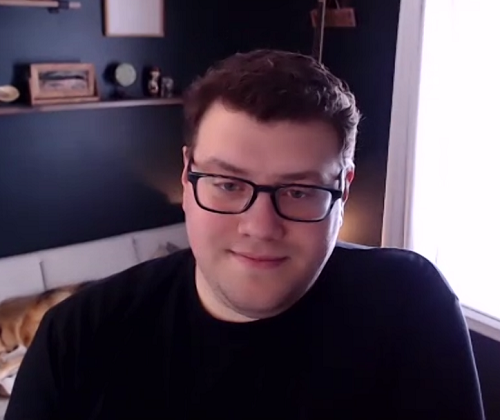MouthWatch Marries Telemedicine to Dentistry to Aid Both Dentists and Patients
MouthWatch (Metuchen) was ready for the future and for COVID-19 — although no one saw the latter coming.
The startup was founded in 2012 by Brant Herman, CEO; Bob Bellhouse, COO; and Jerry Herman, who is a practicing dentist. It offers a provider-focused, patient-friendly teledentistry platform with high-grade data security, according to Brant Herman.
“When COVID hit and everything was shut down, suddenly you had this storm of events, you had [dental] practices that weren’t able to open except for emergencies,” he told us. “You had patients who were nervous about going in [to an office], even if they had an emergency. You also had a landscape of legislative and insurance policy changes happening rapidly.”
“The company’s product, TeleDent, is “a cloud-based platform,” said Herman, “Teledentistry has two primary modalities of communication. One is called ‘synchronous,’ which is what we’re doing now — a live video with screen sharing, file sharing and so forth. And then ‘asynchronous,’ which is more messaging. If you know Slack, it’s kind of like that. I can send you the message, and if we’re in real time, we’re chatting. And then if I step away and I have to go see a patient, I come back, and it’s almost like email. Now I see you’ve sent me something, now I can reply to you. So that’s really the primary functionality of it.”
Herman added that patients can use the camera on their computers or their smartphones to take still photos or to capture video images during a live or recorded chat that will aid the dentist’s understanding of a clinical need.
COVID-Accelerated Teledentistry
Herman noted that the timing was appropriate. “You had insurance covering teledentistry consultations, you had a willingness by patients because they were sitting at home on their couch and dentists were sitting at home on their couch, so dentists were suddenly saying, ‘This is the way my practice stays open. I can still talk to my patients. I can figure out if they do need to come in if it is an emergency,’” he said.
“And even if they need a prescription or a painkiller the DEA [Drug Enforcement Agency] wants you to do it over a live two-way video and audio call. So, we saw a really rapid adoption, where practices had scratched their heads a little bit prior, saying, ‘How does this come into play for my practice?’ This was as clear as day as to the need for it.”
MouthWatch is currently going through a HITRUST assessment; HITRUST is a certification standard for information risk management and compliance. “We are in the early stages of preparing for the process, so we’ll become the first and only — that I know of — teledentistry platform that’s HITRUST certified,” said Herman. “Also, we’ve really built [the platform] for enterprise teledentistry.” User management, visibility reporting and business analytics have all been integrated into the TeleDent platform.
MouthWatch is also looking to incorporate artificial intelligence (AI), so that when images are imported, the dentist can run an algorithm to better understand them. And the startup intends to add e-prescribing to the platform, to enable dentists to automatically call in prescriptions to their patients’ pharmacies. “We’re continuing to add integrations.”
In addition, the company has developed the MouthWatch Intraoral Camera, which is a unique product, Herman said. “Our camera [provides] really high-quality, crisp images,” which explains its effectiveness. “It’s affordable. You know, there are a lot of cameras that are $1000, $2,000. Ours is $300, and the integration is probably one of the key things. So, this combination of image quality, ease of use, and then, of all of [the] software that practices use for capturing X-rays — ours will integrate with all of those.”
Dentists primarily use the Intraoral Camera chairside, along with their normal X-ray software, but when it’s used as part of the TeleDent platform, it adds value for remote evaluations conducted by hygienists or specialists.
Growing at the Jersey Shore
MouthWatch, which was in the Inc. 5000 last year, ranking 1,303 out of the 5,000 Fastest-Growing Private Companies in America, has about 20 employees, all of whom live near Metuchen or on the Jersey Shore. “And then we do have people during the pandemic that we added on who live in Idaho and California,” said Herman. “And we became a little less geographically restricted.”
This being said, he is cognizant of the great talent pool in the Garden State. “We started our company in Manhattan, and then, after we were growing, we said, ‘Look, I want to be closer to home. And I’m not going to see any challenge, I think, in recruiting people for the company.’ And, as a startup, I need those two and a half hours back in a day, instead of doing this on the train. Let’s get a bigger space nearby. So, it’s been great, and the town is really fantastic. I like being close to the talent that may not want to head into Manhattan every day, but still has the skill set to work in a major metro.
“Metuchen [where Herman lives, by the way] is in a great spot. It’s really convenient for transport; there’s so many roads that intersect around here. And I think it’s got a strong academic environment, where you find a lot of thought leaders.”





